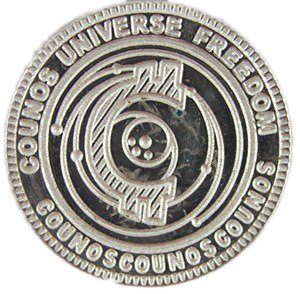


سعر SappChatAPP
بياناتSappChatالرئيسية
نبذة حول SappChat (APP)
SappChat Token: الرمز الرقمي للمستقبل
في العالم الرقمي الذي نعيشه اليوم، يتزايد الاهتمام بالعملات الرقمية الغير مركزية في كل مكان. مع الأخذ بعين الاعتبار النمو الهائل للتشفير والتكنولوجيا القائمة خلفها (البلوك تشين)، فإنه ليس من الصعب رؤية لماذا تحظى الرموز المشفرة بشعبية متزايدة.
واحدة من هذه الرموز الرائدة هي SappChat Token. هذه العملة الرقمية، التي أطلقتها منصة SappChat، أصبحت نقطة تحول كبيرة في عالم العملات الرقمية، حيث أدخلت مفهومًا جديدًا ومبتكرًا لم يسبق له مثيل من خلال التواصل عبر المحادثات المباشرة والمحفظة الرقمية المتكاملة.
ميزات SappChat Token
قد يكون من الصعب فهم القيمة الحقيقية ل SappChat Token بدون دراسة ميزاتها الأساسية. اليك بعض النقاط الرئيسية الذي يجب معرفتها:
-
الأمان والخصوصية: يعد هذا أحد الجوانب التي يتميز بها SappChat Token عن غيره من العملات الرقمية. توفر تقنية البلوك تشين التى تستخدمها SappChat الأمان والخصوصية للمستخدمين.
-
المراسلة المباشرة: تقدم منصة SappChat ميزة المراسلة المباشرة، حيث يمكن للمستخدمين إجراء معاملات على الفور دون الحاجة للخروج من محادثة.
-
المحفظة المتكاملة: تمتاز منصة SappChat بمحفظة رقمية مدمجة صممت خصيصًا ل SappChat Token، تسهل على المستخدمين إدارة رموزهم وإجراء المعاملات من خلال النقرات القليلة.
بشكل عام، فإن SappChat Token هو تجسيد للتكنولوجيا الحديثة في عالم العملات الرقمية. حيث يستثمر في تحقيق الأمان والخصوصية للمستخدمين، بالإضافة إلى مرونة وسهولة الاستخدام. بلا شك، فإن الإمكانات الهائلة والفرص الجديدة التي يمكن أن يفتحها هذا الرمز في السنوات القادمة تجعله واحدة من العملات الرقمية الأكثر إثارة للمراقبة.
تقرير تحليل الذكاء الاصطناعي حول SappChat
سعر SappChat الحالي اليوم بعملة EGP
التنبؤ بسعر SappChat
متى يكون الوقت المناسب لشراء APP؟ هل يجب أن أشتري أو أبيع APP الآن؟
ماذا سيكون سعر APP في 2026؟
ماذا سيكون سعر APP في 2031؟
الأسئلة الشائعة
ما السعر الحالي لـ SappChat؟
ما حجم تداول SappChat على مدار 24 ساعة؟
ما أعلى مستوى على الإطلاق لـ SappChat؟
هل يمكنني شراء SappChat على منصة Bitget؟
هل يمكنني تحقيق دخل ثابت من الاستثمار في SappChat؟
أين يمكنني شراء SappChat بأقل رسوم؟
SappChat المقتنيات حسب التركيز
SappChat من العناوين حسب الوقت المحتفظ به

كيفية شراء SappChat(APP)

أنشئ حسابًا مجانيًا على Bitget

تحقق من حسابك

تحويل SappChat إلى APP
انضم إلى تداول APP بالنسخ من خلال متابعة المتداولين المميزين.
إضافات جديدة على Bitget
شراء المزيد
أين يمكنني شراء SappChat (APP)؟
قسم الفيديو - التحقق السريع والتداول السريع!

SappChat من التقييمات
الأصول ذات الصلة
معلومات إضافية حول SappChat
نظرة عامة على العملة
متعلق بالعملات
متعلق بالتداول

































